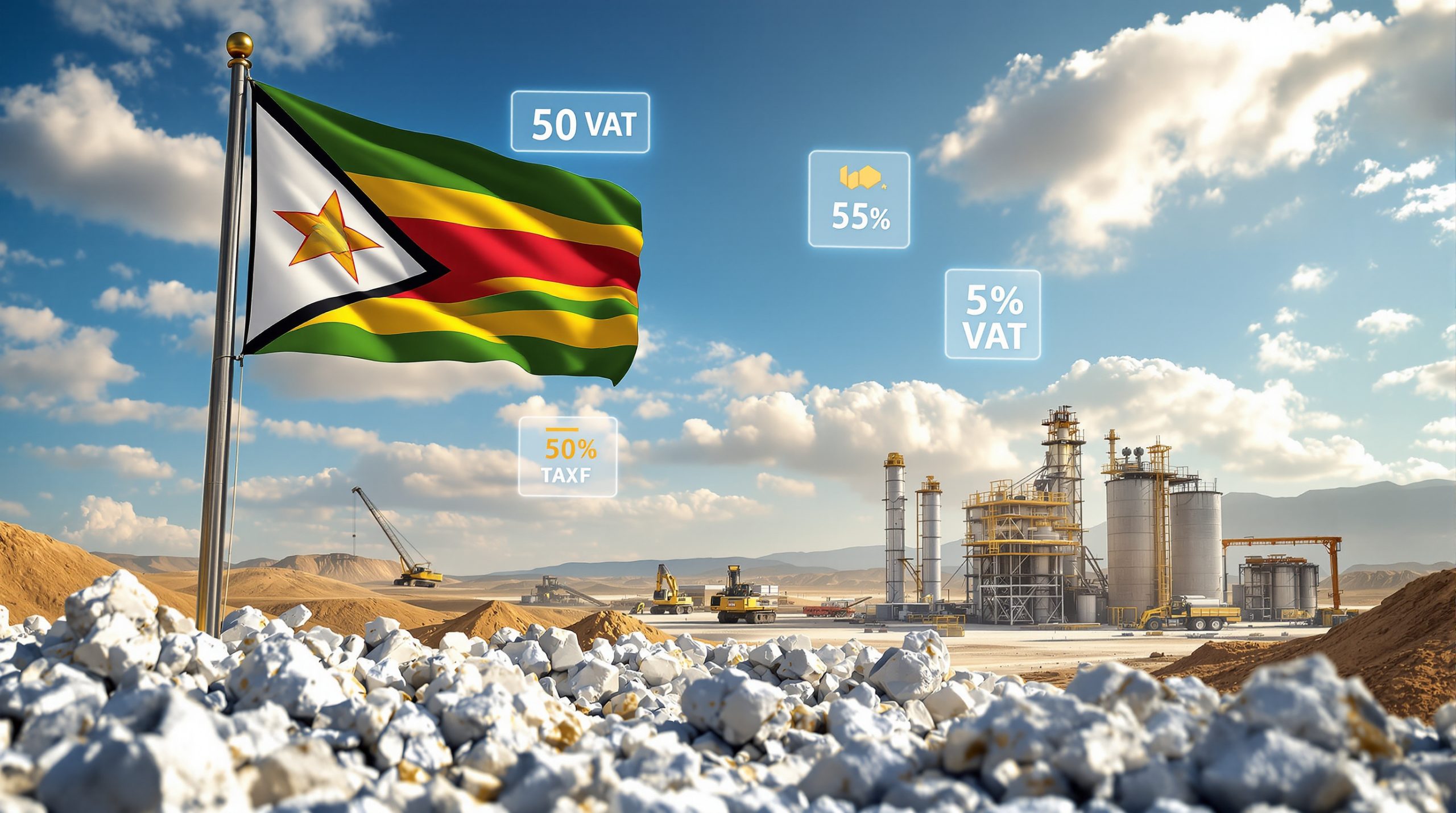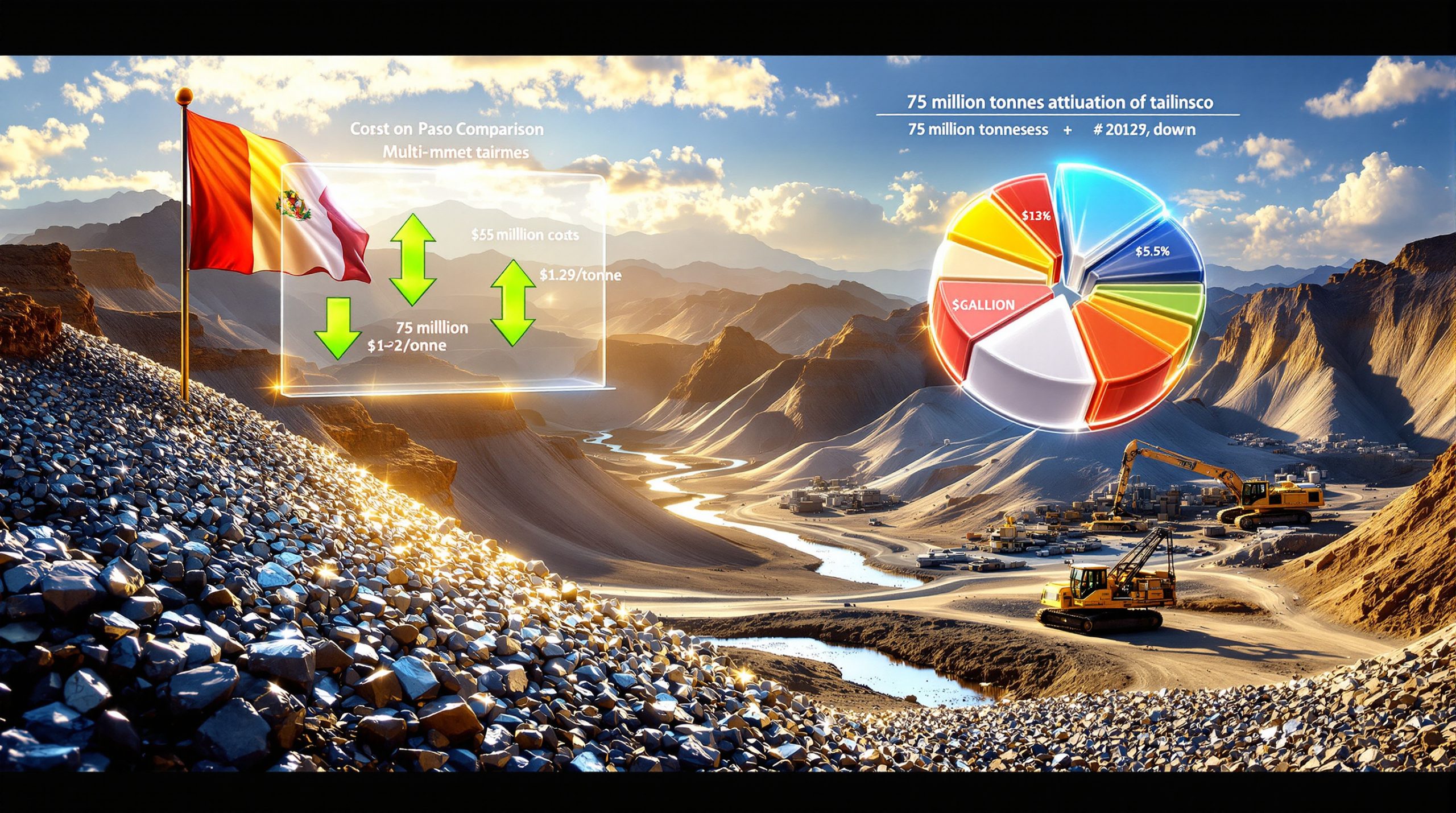What Role Does Chile's Nuclear Agency Play in Lithium Production?
Chile's lithium industry operates under a unique regulatory framework where the Chilean Nuclear Energy Commission (CCHEN) maintains significant oversight authority. This specialized arrangement stems from a 1979 declaration that classified lithium as a "strategic" material due to its potential applications in nuclear processes. While lithium's primary use has shifted dramatically toward batteries in recent decades, this regulatory classification has persisted, creating a distinctive approval pathway for lithium projects in the country.
The CCHEN's authority extends to setting extraction quotas and providing export permissions, making it a critical gatekeeper for Chile's lithium sector. This regulatory approach differs significantly from conventional mining oversight seen in most resource-rich nations and reflects Chile's historical perspective on lithium as a material of national security importance.
"The CCHEN's authority represents a regulatory anachronism that has nevertheless shaped Chile's entire lithium industry structure. What began as nuclear security policy has evolved into a cornerstone of national resource strategy." — Mining industry analyst quoted in Bloomberg News
The agency's recent approval of Codelco's extraction request for the Atacama salt flat marks a pivotal development in Chile's lithium expansion strategy. This decision clears a major regulatory hurdle that has been among the most significant barriers to production growth in the world's largest lithium reserve holder.
The Strategic Classification of Lithium
Chile's designation of lithium as "strategic" in 1979 came during a period when the material's nuclear applications received more attention than its potential in energy storage. Lithium has historically been used in thermonuclear weapons as lithium deuteride, which produces tritium during the fusion process. This military application likely influenced the strategic classification, though this connection rarely surfaces in contemporary discussions of Chile's lithium policy.
This regulatory framework creates several distinctive characteristics in Chile's lithium sector:
- Projects require explicit CCHEN approval regardless of standard mining permits
- Export quantities must receive CCHEN authorization
- Production quotas are established through this specialized channel
- Foreign investment faces additional scrutiny through this process
The classification's persistence despite lithium's evolved commercial applications highlights the regulatory inertia that can affect resource governance. What began as nuclear security policy has transformed into a mechanism for state control over a critical minerals & energy transition, demonstrating how regulatory frameworks can outlive their original purpose while finding new relevance.
How Will Chile's Lithium Production Expand Under New Approvals?
The recent CCHEN approval represents a watershed moment for Chile's lithium industry, potentially enabling substantial production growth through the 2030s and beyond. By authorizing Codelco's extraction request at the Atacama salt flat from 2031 to 2060, the nuclear agency has removed a significant obstacle to the ambitious expansion plans developed by the Codelco-SQM partnership.
This regulatory green light creates a pathway toward substantially increased production capacity over the coming decades, positioning Chile to maintain or expand its global market share despite intensifying international competition in the lithium sector.
Production Growth Targets
Chile's lithium expansion plans center around dramatic production increases from the world-class Atacama salt flat:
- Current production capacity: Approximately 200,000 metric tons of lithium carbonate equivalent annually
- Planned expansion target: Up to 330,000 metric tons
- Percentage increase: 65% production growth
- Expansion timeframe: Operations approved from 2031 to 2060
- Production methodology: Primarily brine evaporation
This planned expansion represents one of the largest single lithium production increases globally and would significantly impact world supply. The strategy leverages Chile's natural competitive advantage in the Atacama, where production costs remain among the world's lowest due to exceptional lithium brine insights and ideal evaporation conditions.
"The venture is betting on low expenses to keep expanding as higher cost producers cut back," noted industry observers in Bloomberg News reporting on the approval.
This cost advantage provides Chile strategic resilience against market price fluctuations that might force higher-cost producers to curtail operations during down cycles. The long-term planning horizon (through 2060) also demonstrates Chile's commitment to maintaining its position in lithium markets for generations to come.
The Codelco-SQM Partnership Structure
The expansion plans hinge on a novel partnership structure between state-owned Codelco and private lithium producer SQM:
- SQM would transfer majority ownership of its Atacama assets to Codelco
- In exchange, SQM gains operational rights for three additional decades
- The arrangement balances state control with private operational expertise
- The partnership preserves operational continuity while changing ownership structure
This arrangement represents a significant restructuring of Chile's lithium industry, increasing state participation while maintaining the operational expertise developed by SQM over decades. The partnership aims to combine the strengths of both entities – Codelco's state backing and SQM's technical and commercial capabilities – to maintain Chile's competitive position in increasingly crowded global lithium markets.
The partnership structure could potentially serve as a template for future resource development projects in Chile, demonstrating a middle path between full nationalization and purely private development of strategic resources.
What Challenges Does Chile's Lithium Expansion Face?
Despite CCHEN's crucial approval, the planned lithium expansion faces several significant obstacles that could impact implementation timelines and ultimate production goals. Both domestic political dynamics and evolving global market conditions present particular challenges to the Codelco-SQM partnership.
Political Opposition
The partnership's path forward is complicated by Chile's internal political landscape:
- The arrangement faces growing political resistance within Chile
- Approval process has become entangled in the country's election cycle
- Opposition focuses on questions of state benefit vs. private profits
- Current administration seeks to finalize the arrangement before potential political changes
- Some political factions advocate for greater state control than the current proposal offers
This political dimension creates uncertainty despite the CCHEN approval, as future administrations could potentially revisit aspects of the arrangement. The timeline gap between approval (2023) and implementation beginning in 2031 creates a lengthy window during which political attitudes toward the project could evolve significantly.
The politicization of lithium policy reflects its importance to national economic development strategies, with differing visions for how the resource should be managed competing in Chile's democratic process. While CCHEN's clearance removes one significant obstacle, political challenges may continue to create headwinds for the expansion plan.
Market Dynamics
The global lithium market presents additional challenges to Chile's expansion strategy:
- Current lithium market characterized by strong demand but increasing supply
- Price volatility has increased as new production enters the market
- Long-term planning horizon (2031-2060) creates uncertainty amid rapid market evolution
- Technology changes in battery chemistry could alter demand projections
- New direct lithium extraction boost may change cost structure across the industry
Chile's low-cost production strategy aims to remain competitive as higher-cost producers reduce output during market downturns. However, the lengthy timeline between approval and implementation means market conditions could shift dramatically before production begins to increase.
The expansion plan must navigate a market that some analysts believe could transition from current undersupply to potential oversupply as multiple global projects advance simultaneously. Chile's bet on its cost advantage represents a strategic calculation that even in a crowded market, Atacama brine operations will remain among the most competitive globally.
"The approval signals confidence that despite market fluctuations, Chile's lithium resources will remain economically viable across multiple market cycles due to their exceptional grade and production economics."
Geopolitical considerations further complicate the picture, as many nations seek to secure battery supply chains through domestic production or friendly-nation sourcing. Chile's approach must account for these evolving preferences that may prioritize supply security over pure economic calculations.
What Is the Global Significance of Chile's Lithium Strategy?
As the country with the world's largest lithium reserves, Chile's production decisions have far-reaching implications for global battery metal markets and the energy transition. The CCHEN approval signals Chile's commitment to maintaining its position as a lithium superpower for decades to come.
Chile's Position in Global Lithium Markets
Chile's geological endowment places it at the center of global lithium discussions:
- Chile possesses approximately 9.2 million tonnes of lithium reserves, the world's largest
- The Atacama salt flat represents one of the most productive lithium resources globally
- Production costs in Chile average 30-50% lower than many competing sources
- Brine lithium from the Atacama typically has a lower carbon footprint than hard-rock sources
- Strategic planning extends decades into the future, indicating long-term commitment
This resource advantage has historically given Chile substantial influence in global lithium markets. The planned expansion would reinforce this position during a period when lithium demand is projected to increase dramatically to support electrification goals worldwide.
Chile's lithium expansion strategy also reflects a recognition that battery materials represent a critical growth industry as the world transitions from fossil fuels. By positioning for increased production through 2060, Chile signals confidence that lithium will remain essential to energy systems despite ongoing research into alternative battery chemistries.
Implications for Battery Supply Chains
Chile's production expansion has significant implications for global battery manufacturing networks:
- Increased production could help meet growing demand for electric vehicle batteries
- Long-term production certainty provides stability for downstream manufacturers
- The expansion timeline aligns with projected growth in global electrification
- Secured supply from stable jurisdictions reduces geopolitical risk for battery makers
- Chile's production increase could moderate price expectations for battery materials
Battery manufacturers and automakers seeking secure, long-term supply arrangements may find Chile's expansion plans particularly attractive. The combination of resource size, cost competitiveness, and regulatory clarity creates favorable conditions for supply chain development.
However, Chile faces increasing competition as other nations accelerate lithium development. Australia has rapidly expanded hard-rock lithium production, while Argentina continues developing its portion of the "lithium triangle." Even Bolivia, with its massive but technically challenging resources, has renewed efforts to commercialize its lithium deposits.
Chile's regulatory approach differs significantly from these competitors, creating both advantages (strategic coordination) and potential disadvantages (additional approval layers) in the race to supply global markets.
How Does Chile's Regulatory Approach Compare to Other Lithium Producers?
Chile's unique regulatory framework, involving nuclear agency oversight, creates a distinctive approach to lithium resource management compared to other major producing countries. This system reflects Chile's historical perspective on lithium as a strategic resource rather than a conventional mineral commodity.
Comparative Regulatory Frameworks
Major lithium-producing nations have developed substantially different approaches to regulation:
| Country | Primary Regulatory Approach | State Ownership | Foreign Investment | Production Control |
|---|---|---|---|---|
| Chile | Nuclear agency oversight with strategic resource classification | Increasing through Codelco partnerships | Permitted with restrictions | Quota-based system |
| Australia | Traditional mining regulations without special designation | Minimal | Actively encouraged | Market-driven |
| Argentina | Provincial control with federal coordination | Varies by province | Generally open | Limited restrictions |
| China | State-directed development with strategic resource management | Substantial | Increasingly restricted | Production targets |
| Bolivia | State-controlled development with restricted foreign involvement | Nearly complete | Limited to technology partnerships | Centrally planned |
Chile's approach creates distinctive advantages and challenges:
- Advantages: Strategic coordination, national interest protection, potential for coordinated expansion
- Challenges: Additional regulatory layers, political exposure, potential for approval delays
The nuclear agency's involvement represents a regulatory anomaly internationally, as most nations manage lithium through conventional mining or environmental agencies. This distinctive approach reflects Chile's unique history with the resource and its continuing emphasis on strategic management rather than pure market governance.
As the lithium industry matures globally, these divergent regulatory approaches will likely influence where and how quickly new production develops. Chile's system provides stronger state coordination but may face efficiency challenges compared to more streamlined regulatory environments like Australia's.
"While unusual by global standards, Chile's regulatory framework through CCHEN has created stability through a consistent approach to lithium development spanning decades, albeit at the cost of some flexibility."
The Chilean model's success will be measured by its ability to balance strategic oversight with timely development to meet rapidly growing global demand. The recent CCHEN approval suggests the system can accommodate major expansion plans, though the political dimensions of lithium governance remain challenging.
What Does the Future Hold for Chile's Lithium Industry?
The CCHEN approval represents just one step in Chile's evolving lithium strategy. Future developments will depend on political, market, and technological factors that will shape how the country leverages its vast lithium resources in the coming decades.
Future Development Scenarios
Several potential paths could emerge for Chile's lithium sector:
- Additional Partnerships: Potential for new arrangements beyond the Codelco-SQM model
- Value Chain Integration: Possibility of developing downstream processing to capture more value
- Technological Evolution: Potential adoption of direct lithium extraction to reduce environmental impact
- Regulatory Refinement: Possible modernization of the strategic material classification
- Market Positioning: Strategic decisions on volume vs. price optimization in global markets
The lithium industry's future in Chile will likely include efforts to capture more of the value chain through domestic processing. While Chile has historically exported primarily lithium carbonate and hydroxide, future strategies may target cathode production or even battery-grade lithium refinery development to increase economic returns from the resource.
Environmental considerations will increasingly influence extraction methodologies, particularly regarding water usage in the water-stressed Atacama region. Technologies that reduce freshwater consumption or allow for more efficient recovery could become important differentiators for Chilean operations seeking to demonstrate sustainability.
Political changes remain perhaps the greatest variable in Chile's lithium future. Different administrations may pursue varying approaches to state involvement, international partnerships, and environmental oversight. These potential shifts create planning challenges for long-term projects but also opportunities to refine the national approach to this strategic resource.
"The 29-year timeframe of the CCHEN approval creates a planning horizon that spans multiple political cycles, technological generations, and market evolutions – requiring adaptability within an established framework."
Regardless of specific policy evolutions, Chile's exceptional lithium endowment ensures it will remain a central player in global markets. The challenge for Chilean policymakers and industry participants will be maximizing the sustainable value of this resource while adapting to rapidly changing technological and market conditions.
FAQ: Chile's Lithium Industry and CCHEN Approval
Why does a nuclear agency regulate lithium in Chile?
The Chilean Nuclear Energy Commission (CCHEN) gained authority over lithium in 1979 when the material was classified as "strategic" due to its potential applications in nuclear processes. This historical designation relates to lithium's use in hydrogen bombs and certain nuclear reactor designs. Despite lithium's primary use now being in batteries rather than nuclear applications, this regulatory structure has persisted through multiple governmental changes.
What makes the Atacama salt flat so valuable for lithium production?
The Atacama salt flat contains some of the world's highest-grade lithium brine deposits, with concentrations reaching 1,000-1,500 parts per million. Its extremely arid conditions (the Atacama is one of Earth's driest deserts) facilitate natural evaporation, making extraction more cost-effective than in many other regions. The high mineral concentration and minimal rainfall create ideal conditions for solar evaporation, reducing processing costs substantially compared to hard-rock mining operations.
How might Chile's lithium expansion affect global prices?
The planned expansion of production capacity to 330,000 metric tons represents a significant increase in global supply. While this expansion occurs over a long timeframe (2031-2060), the commitment to increased production could help moderate long-term price expectations for lithium carbonate. The expansion's impact will depend on how global demand evolves and whether other major projects advance simultaneously. Chile's low-cost position suggests its production would remain economically viable even in lower-price environments that might challenge higher-cost producers.
What is the relationship between Codelco and SQM in this partnership?
Under the partnership arrangement, state-owned Codelco would gain majority control of SQM's lithium assets in the Atacama salt flat. In exchange, SQM would secure operational rights for an additional three decades, allowing the company to continue production while transitioning majority ownership to the Chilean state. This structure balances Chile's interest in greater state participation in strategic resources with the value of SQM's operational expertise and established market presence. The arrangement represents a hybrid approach between full nationalization and purely private development.
Wondering How to Spot ASX Mining Discoveries Before the Market Does?
Discovery Alert's proprietary Discovery IQ model instantly analyses significant mineral discoveries on the ASX, helping investors capitalise on opportunities before the broader market. Explore how major discoveries can generate substantial returns by visiting Discovery Alert's dedicated discoveries page and start your 30-day free trial today.




